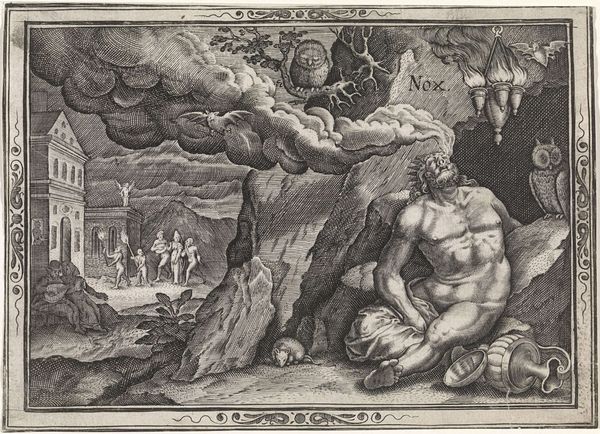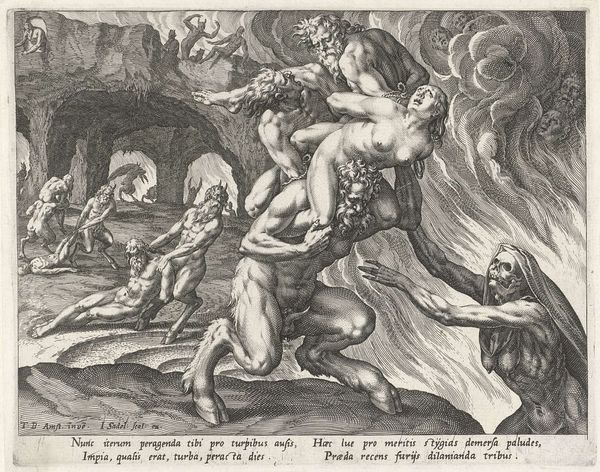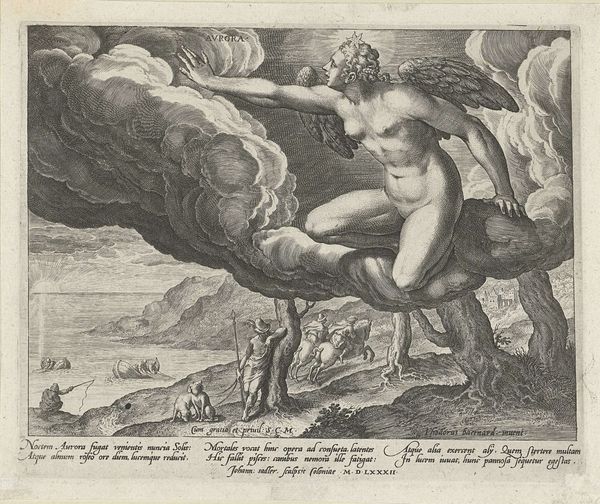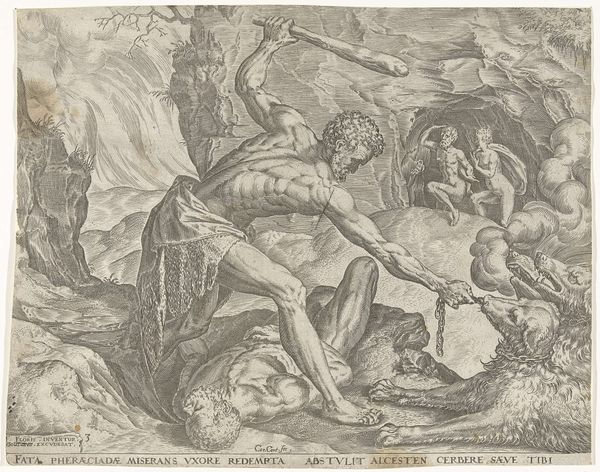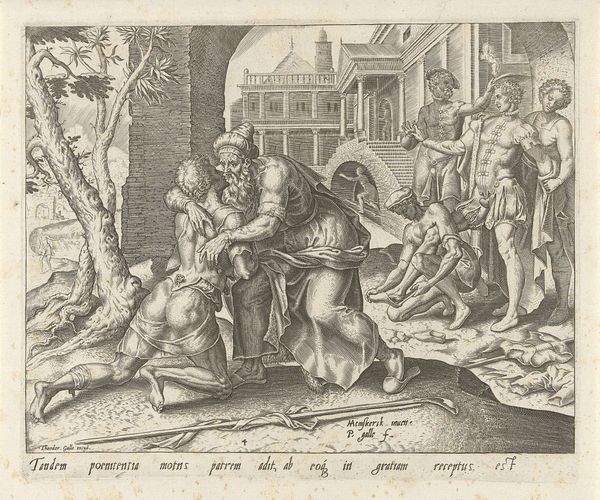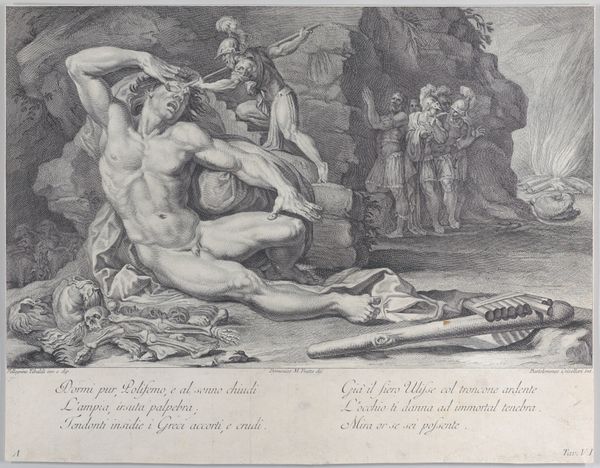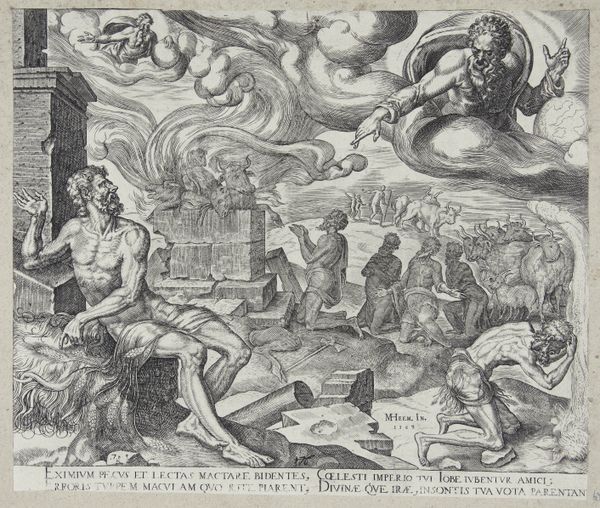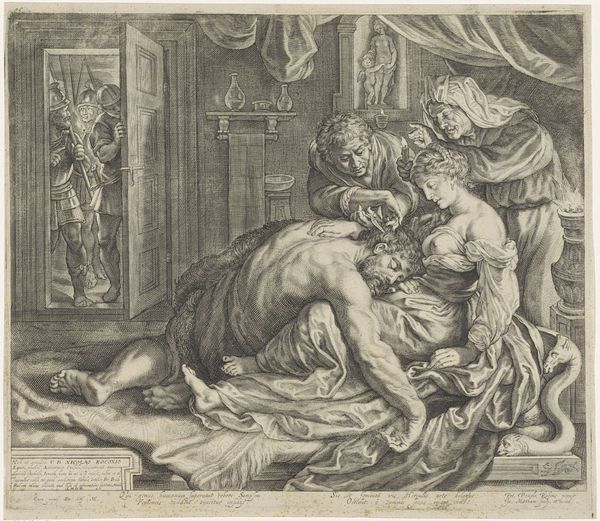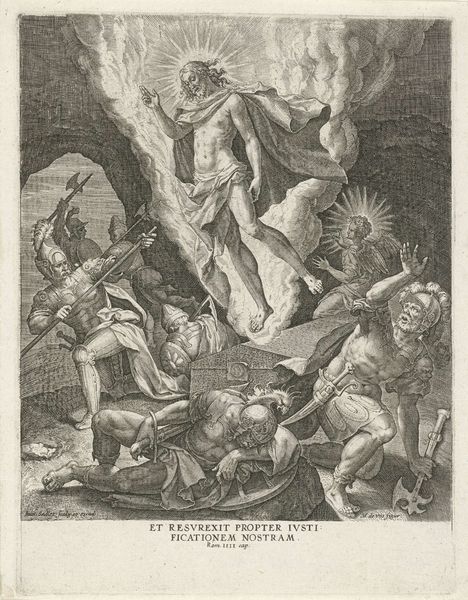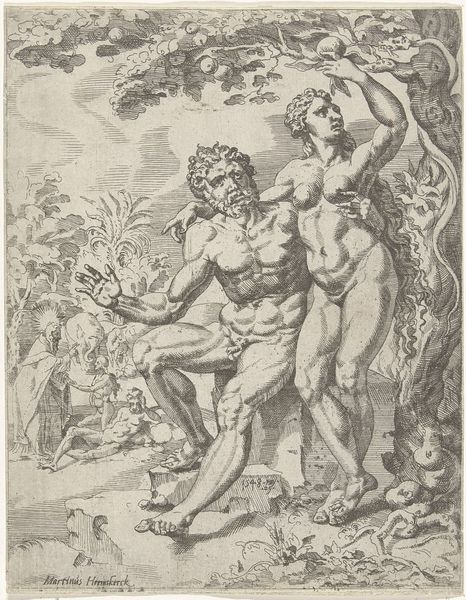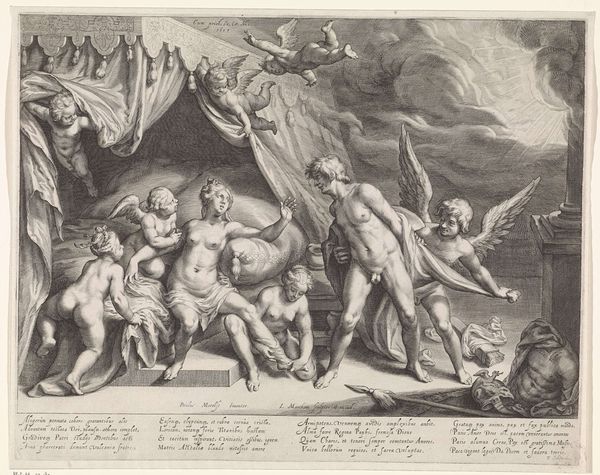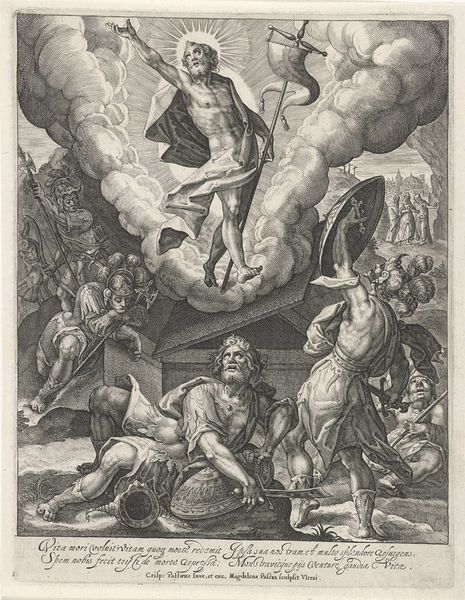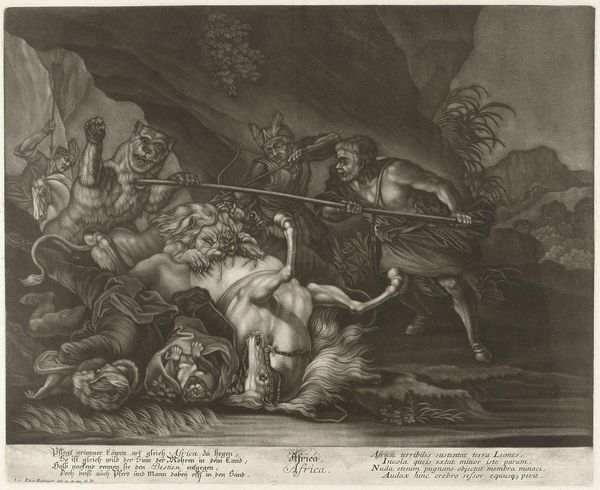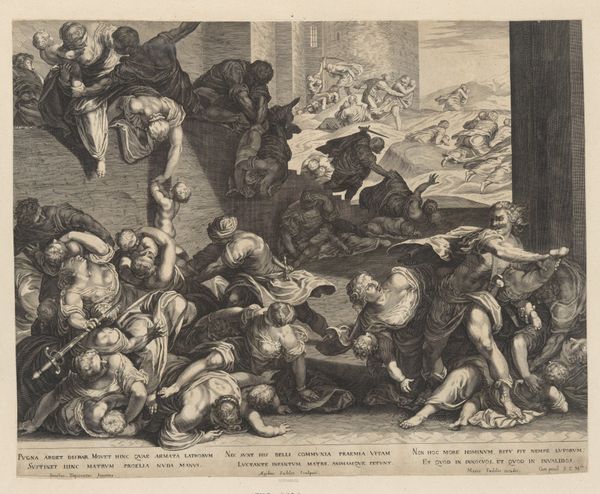
Dimensions: height 182 mm, width 229 mm
Copyright: Rijks Museum: Open Domain
This print, Nacht, or Night, was made by Johann Sadeler the first, around 1582. It is an engraving, meaning that the image was incised into a metal plate, likely copper. Ink was then applied to the plate and carefully wiped off the surface, remaining only in the incised lines. Finally, damp paper was pressed against the plate to pick up the ink, creating the print we see today. Consider the labor involved in this process: the careful control of the burin as it cut the lines into the copper, the even application of ink, the operation of the printing press. The final result is a network of lines, each one carefully considered to produce tonal variation. Notice how the lines are closer together in the shadows, creating a greater density of ink and a darker tone, and further apart in the highlights. Prints like these were relatively inexpensive to produce and could be widely distributed, making them an important means of disseminating images and ideas in the early modern period. The print becomes a means of production and a commodity for consumption. By appreciating the material and the making of this print, we can better understand its social and cultural significance.
Comments
No comments
Be the first to comment and join the conversation on the ultimate creative platform.
